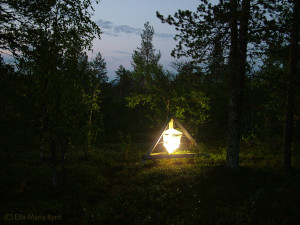Mark Hunter, University of Michigan – Flourishing Despite Climate Change
Naturally, species react differently to climate change.
Dr. Mark Hunter, a professor in the Department of Ecology and Evolutionary Biology at The University of Michigan, observed forest moths over a landmark 30 year study.
Dr. Mark Hunter is the Henry A. Gleason Collegiate Professor of Ecology and Evolutionary Biology at the University of Michigan. He received his bachelor’s degree in 1984 and his doctorate in 1988, both from the University of Oxford in England. After serving as a NATO International Fellow and an NSERC International Fellow, he joined the faculty of the University of Georgia in 1995. While at UGA, he served as Professor in the Institute of Ecology and as founding Director of the Center for Biodiversity and Ecosystem Processes. He joined the University of Michigan in January 2006. His research interests include plant-animal interactions, ecosystem ecology, biodiversity, and population dynamics. His research links population processes with ecosystem processes in terrestrial environments and explores the mitigation of global environmental change.
Prof. Hunter has published over 130 research articles and written or edited five books. He is the recipient of both a CAREER Award and an OPUS award from the National Science Foundation. From 2007 to 2012, he served as the first Director of the award-winning Frontiers Master’s Program in Ecology and Evolutionary Biology, which fosters graduate student diversity at the University of Michigan. Media coverage of his research includes The BBC, CNN, CBC, The Times, The Business Standard, The LA Times, Science Podcast, Nature World News, The National Geographic, and National Public Radio/Public Radio International.
Moths Flourish Despite Climate Change

Closeup of a Poecilocampa populi moth, one of 80 species analyzed in a 32-year study of subarctic forest moths in Finnish Lapland. Populations of this moth are increasing at the study site, even though moth populations there appear to be negatively impacted by a rapidly changing climate. Photo by Walter Schon reproduced under the GNU Free Documentation License.
A rapidly changing climate is our new reality. Average global temperatures are increasing and rainfall patterns are becoming more variable. But how are communities of animals and plants responding to our changing world?
Way up north in Finnish Lapland, 150 miles north of the Arctic Circle, my colleagues are finding answers. At Värriö Strict Nature Reserve, they have been counting forest moths for over 30 years, recording ups and downs in the lives of 456 moth species. Since our study began, annual average temperatures have increased by a whopping 3.5 degrees Fahrenheit. So, how are the moth populations responding?
Surprisingly well, at first glance. In fact, our analysis of 32 years of data from the reserve show that 90% of moth populations have remained stable or have actually increased. Is this finally some good news for climate change? Do Finnish moths like it hot?

A light trap used to capture moths in a subarctic forest in Finnish Lapland. The study generated 32 years of data about moth population responses to a changing climate. Photo by Ella-Maria Kyro with permission.
Unfortunately, no. Simple correlations between environmental factors and population size can be sorely misleading. For example, the US population grew from about 80 million people to 180 million between 1900 and 1960, a period during which per capita cigarette consumption increased from less than 100 cigarettes per year to over 4,000. The US population didn’t double in size because people were smoking more. Rather, the population grew despite people smoking more.
It’s the same for Finnish moths. Our statistical models uncovered largely negative impacts of climate change on moth populations, which are stable despite climate change, not because of climate change. Other ecological factors are buffering moth populations from negative impacts of climate change. At least for now.
If negative effects of climate change are masked for forest moths in Finnish Lapland, they may be masked more generally for animals and plants throughout the world. But for how long? We’ll need hard work and patience to find out, the kind of perseverance that my Finnish colleagues have shown for decades.




Interesting, indeed. Nice analogy with the US population. So, what “Other ecological factors are buffering moth populations from negative impacts of climate change?” Thank you!